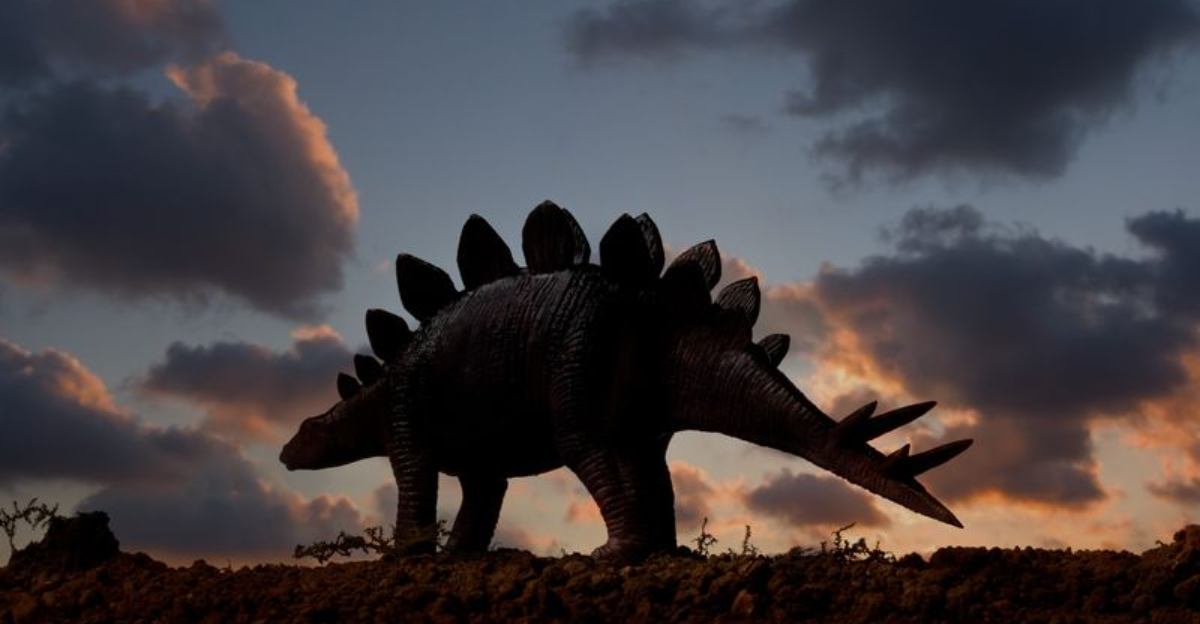Dinosaurs have always fascinated us with their immense size and power. Let’s explore the 11 most powerful dinosaurs to have ever walked the Earth.
From the towering giants to the fierce predators, each dinosaur has its own unique features that make it stand out.
Join us on this journey back in time as we rank these incredible creatures based on their strength, intelligence, and survival skills.
11. Spinosaurus
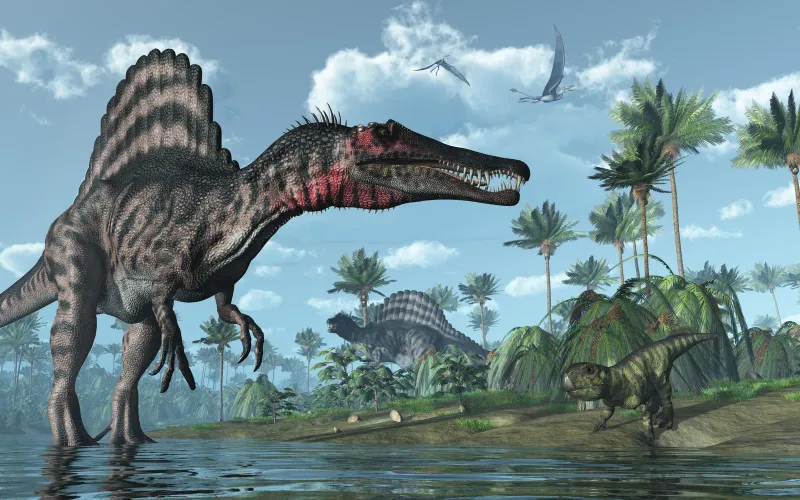
Spinosaurus, known for its distinctive sail-like structure on its back, was one of the most unique dinosaurs. This massive creature could grow up to 59 feet long, making it even longer than the T-Rex. Its long, crocodile-like snout was filled with conical teeth, ideal for catching fish.
Unlike many other large theropods, Spinosaurus is believed to have been semi-aquatic. It inhabited river systems and wetlands, where it likely hunted fish and other aquatic prey. This adaptation made it one of the top predators in its environment, with a lifestyle similar to modern crocodiles.
Its long, muscular arms and powerful claws were perfect for gripping slippery prey, while its sail may have been used for display or thermoregulation.
The Spinosaurus’ versatile hunting strategies and unique adaptations highlight its power and dominance in its ecosystem. Its impressive size and specialized features make it a standout among the most powerful dinosaurs.
10. Velociraptor
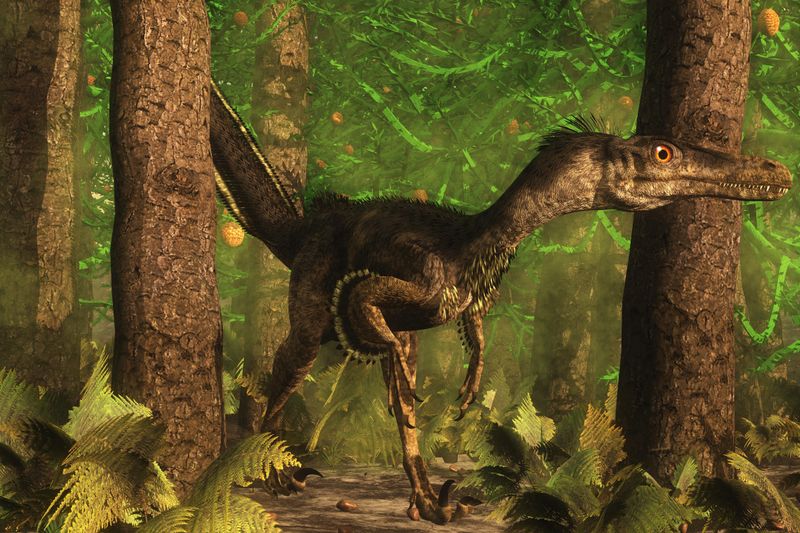
Though smaller than giants like the T-Rex, this dino was a formidable predator in its own right. Standing about 3 feet tall and 6 feet long, this dinosaur was built for speed and agility. Its lightweight body and strong legs allowed it to run at high speeds, making it an adept hunter.
One of the most fascinating aspects of the Velociraptor was its intelligence. It is believed to have hunted in packs, using coordinated strategies to take down prey. This social behavior, combined with its sharp, retractable claws, made it a dangerous adversary.
Velociraptors were feathered, a characteristic that links them closely to modern birds. This feature, along with their keen senses, made them highly adaptable creatures. Although not the largest dinosaur, the Velociraptor’s cunning, speed, and pack mentality earned it a spot among the most powerful dinosaurs.
9. Allosaurus
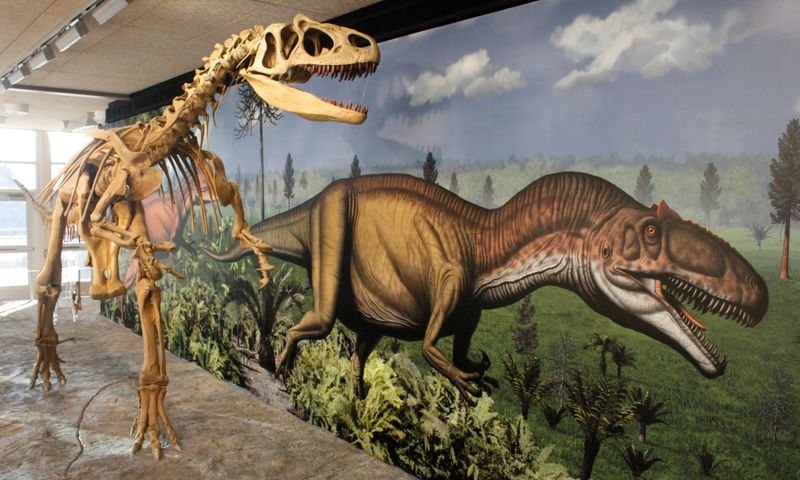
The Allosaurus was a large carnivorous dinosaur that roamed the Earth during the late Jurassic period. It measured up to 28 feet in length and had a robust skull with sharp teeth, perfect for hunting large prey. Its muscular build and powerful legs made it an effective predator.
Allosaurus had relatively long arms with three-fingered hands, each equipped with sharp claws. These claws were likely used to grasp and hold onto prey while delivering lethal bites. Its formidable jaw strength and teeth were adapted for slicing through flesh.
This dinosaur was likely an apex predator in its environment, preying on large herbivorous dinosaurs like the Stegosaurus. Its ability to hunt both alone and in packs increased its chances of a successful hunt. The Allosaurus’ adaptability and hunting prowess make it one of the most powerful dinosaurs known.
8. Brachiosaurus
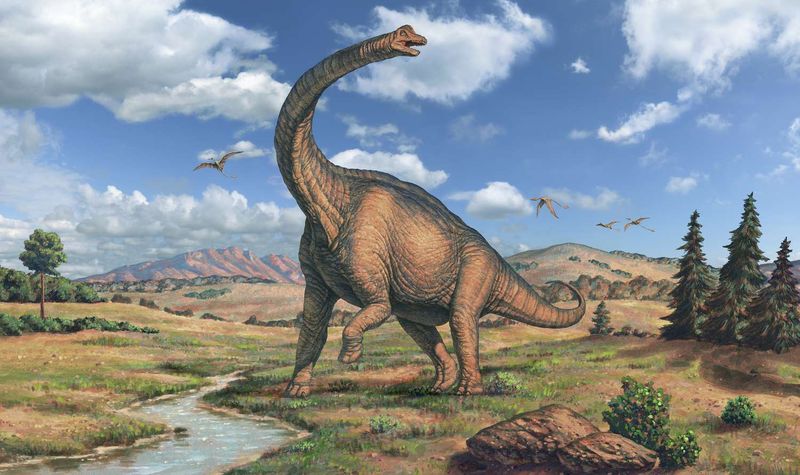
Unlike the meat-eating giants, Brachiosaurus was a gentle giant of the Jurassic, known for its long neck and towering height. It could reach up to 85 feet in length and stand about 40 feet tall, making it one of the tallest dinosaurs.
Brachiosaurus’ long neck allowed it to access food high up in trees, giving it a dietary advantage in its habitat. This herbivorous dinosaur had a small head with peg-like teeth designed for stripping foliage.
Despite its massive size, the Brachiosaurus led a peaceful life, focusing on feeding and moving in herds. Its size alone was a deterrent to predators, offering a natural form of protection. The Brachiosaurus’ ability to thrive in its environment due to its size and feeding habits makes it a powerful presence among dinosaurs.
7. Ankylosaurus
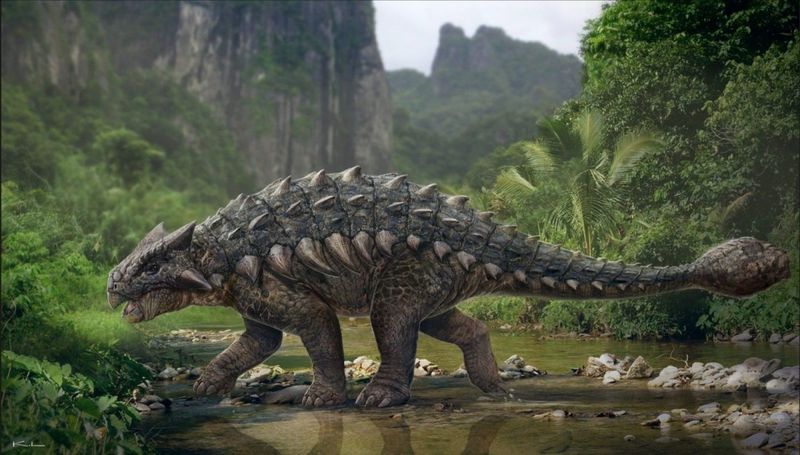
Ankylosaurus was a heavily armored dinosaur, known for its distinctive bony plates and club-like tail. This herbivore lived during the late Cretaceous period and was well-equipped to defend itself against predators.
Its armor consisted of large, bony plates embedded in its skin, providing substantial protection. The Ankylosaurus also had a massive, club-shaped tail that it could swing with force to fend off threats.
Despite being a plant-eater, the Ankylosaurus’ defensive adaptations made it a formidable opponent for any predator. Its low-slung body and wide stance provided stability, while its strong legs supported its armored frame. The Ankylosaurus’ unique features and defensive capabilities underscore its powerful presence in the dinosaur world.
6. Stegosaurus
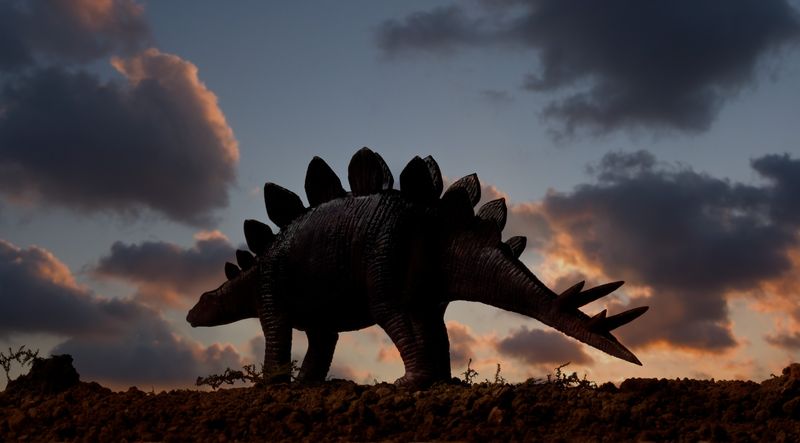
The Stegosaurus is easily recognizable by its distinctive row of large plates along its back and spiked tail, known as the thagomizer. These features made it one of the most interesting herbivores of the Jurassic period.
Despite its large size, the Stegosaurus had a relatively small brain, but its physical adaptations were key to its survival. The large plates could have been used for display, thermoregulation, or defense, while the thagomizer was an effective weapon against predators.
The Stegosaurus walked on four sturdy legs, with its back arched to support its heavy body. Its beak-like mouth helped it strip leaves from plants, and it likely lived in herds for added protection. The Stegosaurus’ unique features and defensive attributes make it a powerful and fascinating dinosaur.
5. Triceratops
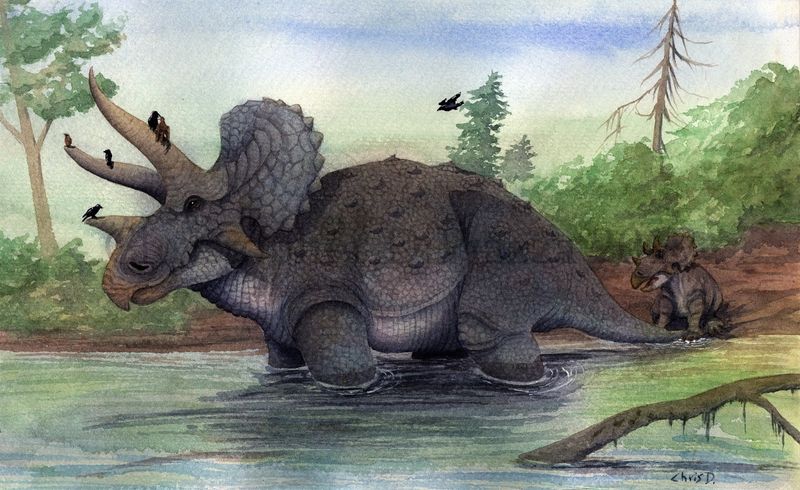
This ancient creature was a large, herbivorous dinosaur known for its three horns and massive bony frill. This dinosaur roamed the Earth during the late Cretaceous period, sharing its environment with predators like the T-Rex.
The Triceratops’ horns were likely used for defense against predators, as well as in combat with other Triceratops during mating rituals. Its sturdy frill provided protection for its neck and was possibly used for display or thermoregulation.
Despite its size, the Triceratops was a relatively fast-moving dinosaur, capable of quick bursts of speed to escape danger. Its strong legs and robust body allowed it to maneuver through its habitat effectively. The Triceratops’ combination of defensive features and agility makes it a powerful presence among the dinosaurs.
4. Giganotosaurus
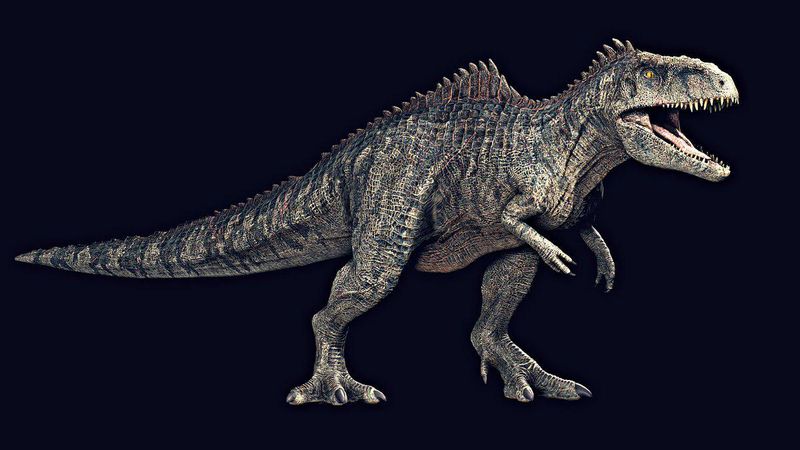
Giganotosaurus was one of the largest known theropods, rivaling the size of Tyrannosaurus Rex. It lived during the late Cretaceous period and was a top predator in its ecosystem.
Reaching lengths of up to 43 feet, the Giganotosaurus had a powerful build with a large skull full of sharp teeth. These teeth were designed to tear through the flesh of its prey, making it an efficient hunter.
Its long, muscular legs allowed it to run at considerable speeds for its size, aiding in its pursuit of prey. The Giganotosaurus’ combination of size, strength, and hunting prowess highlights its position as one of the most powerful dinosaurs to have ever existed.
3. Tyrannosaurus Rex
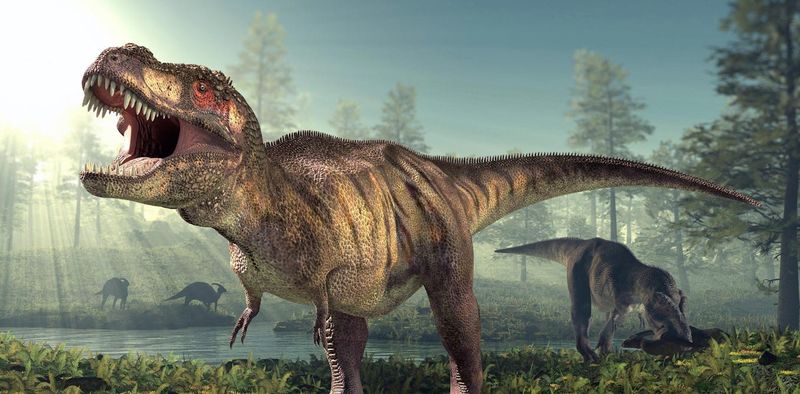
The Tyrannosaurus Rex, often referred to as T-Rex, is perhaps the most iconic dinosaur. Known for its massive size and fearsome presence, it was one of the top predators of its time.
Standing at about 12 feet tall and measuring up to 40 feet in length, the T-Rex was built for power. Its strong hind legs allowed it to move swiftly, while its large, sharp teeth could crush bones with ease.
Despite its short arms, the T-Rex’s incredibly strong jaws more than compensated for any perceived disadvantage. These jaws could deliver a bite force of up to 12,800 pounds, making it one of the most powerful bites in the animal kingdom. Its keen sense of smell and sight made it an effective hunter.
Interestingly, the T-Rex was likely a scavenger as well, using its keen senses to detect carcasses from miles away.
This dual role as predator and scavenger maximized its chances of survival in the competitive prehistoric world. Its dominance during the Cretaceous period has cemented its reputation as one of the most formidable dinosaurs.
2. Diplodocus
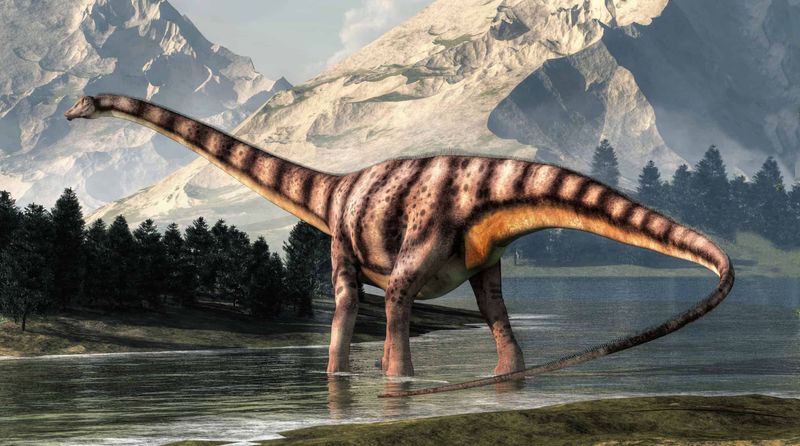
Diplodocus was a long-necked, herbivorous dinosaur known for its impressive length and whip-like tail. It lived during the late Jurassic period and was one of the longest dinosaurs, reaching up to 90 feet.
Its long neck allowed it to reach high into the trees for food, while its equally long tail provided balance and could be used as a weapon against predators. The Diplodocus’ peg-like teeth were perfect for stripping leaves from branches.
Despite its size, the Diplodocus was a gentle giant, likely roaming in herds for protection. Its sheer size made it a formidable presence, deterring many predators from attempting an attack. The Diplodocus’ unique adaptations for feeding and defense make it a powerful figure in the dinosaur kingdom.
1. Carnotaurus
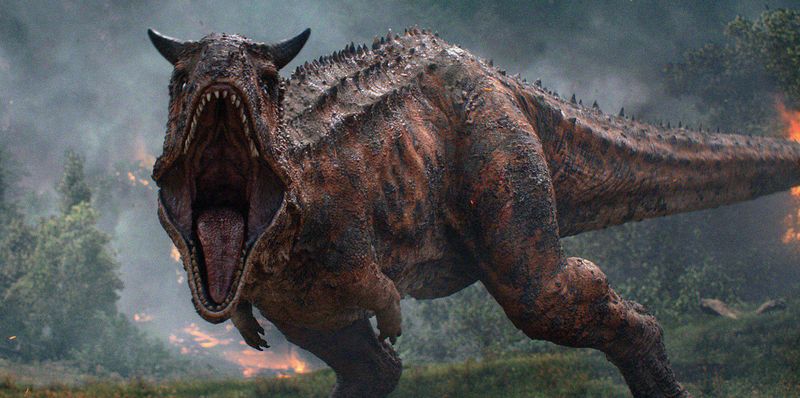
Ending the list with a horror-like creature. Cretaceous was a unique theropod with a distinctive appearance, known for the two horn-like structures above its eyes. It lived during the late Cretaceous period and was a formidable predator.
The Carnotaurus’ horns likely played a role in combat with other dinosaurs, either for territory or mates. Its powerful legs and tail allowed it to move quickly, making it an agile hunter.
Despite having relatively small arms, the Carnotaurus’ strong jaw and sharp teeth were well-suited for catching prey. Its streamlined body reduced wind resistance, enabling faster sprints. The Carnotaurus’ distinctive features and hunting abilities make it a powerful and intriguing dinosaur.

